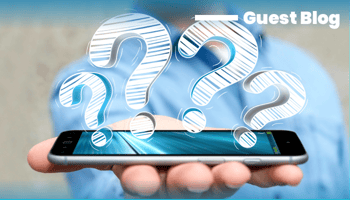With the dust settling on the big announcement between Apple and SAP, it is clear that this is a very strategic partnership for both companies. SAP is going to develop a bunch of custom business applications for iOS devices, iPads and iPhones, as well as release tools so that SAP's 2.5-million member global developers can write their own custom iOS apps using Apple's new programming language, Swift.
In return, Apple gets access to SAP's enormous worldwide salesforce to help it sell devices to SAP's roughly 310,000 worldwide customers, most of whom are large enterprise businesses with thousands of employees.
The question for customers and partners is whether the alliance's benefits will be more than skin deep when it comes to enterprise applications. What applications and tools will be available to customers? What versions of SAP business software will the tools support? The agreement between the two companies covers four basic points:
- A new SAP HANA Cloud Platform SDK for iOS
- A new SAP Fiori for iOS
- Native iOS SAP apps for critical business operations on SAP S/4HANA
- An SAP Academy for iOS
In a recent interview with Information Week, Kevin Ichhpurani, head of business development and strategic ecosystem for SAP, said enterprise customers when looking at the mobile platform are asking for a native experience and that the mobile aspect is the cornerstone of the digital transformation. That native experience is why SAP is keen to add iOS native capabilities to the web-based output that has been the standard user interface with SAP Fiori.
As a company focused on mobile and user-experience solutions, we have built over 100+ mobile apps on top of SAP software already and the user experience can be easily improved. Enterprises can build or deploy mobile apps today, with a great user interface on iOS, Android and Windows. The biggest hurdle in enterprise mobility is, and always has been, the synchronization layer and the ability to adapt to changing business processes.
SAP ERP is built around record based transactions and user initiated actions. In other words, the client opens up a record, locks it, changes some fields, saves and releases the lock. Now you might think that only those fields are updated in the source record, but in reality, the entire record is updated with the information coming back from the client. In addition, the average SAP ERP system is highly customized and that customization flows into the mobile front-end as well.
Will Apple be able to solve that issue. They will only focus on the UI layer and the user experience.
With mobility, things are very different. First of all, you have much more users working on possible the same object at the same time. Secondly, some of these users may be working in an offline mode, and perhaps only synchronize the data at a later time. So, SAP and Apple need to address the synchronization layer and the change management layer in order to be successful as a toolkit.
Combining the power of SAP and Apple with configurable and customizable applications is the key to scale. SAP customers do not want to spend months or years to deploy mobility. This has been a clear message from SAP customers with the other SDKs in the SAP portfolio. Customers have invested heavily in the past into Sybase Unwired Platform (SUP), SAP Mobile Platform (SMP) or the Agentry Platform, but have always been challenged with scalability, performance and change management.
HCPms and mobile apps based on UI5, Kapsel, Apache Cordova, etc. have been a good hybrid option, but arguably don’t always deliver the best UX. Yes, they can deliver on SAP’s corporate UX strategy but, as Steve Lucas says in his post, 'We live in an app driven world', and my experience is that the best apps have the best UX. Not one that is compromised in the name of enterprise consistency, scale and robustness.
I’m sure many iOS developers and SAP enterprises will be very excited at this initial news, as we all await further information and details. For now, it’s good to see the SAP developer website has been updated with links to Apple documentation to get started and there is some early news about the planned iOS SDK to follow, even if it does appear to be quite a few months away.
This idea from SAP and Apple to partner feels like a great step in the right direction, but what matters is how the two companies execute and deliver. How the two companies work together culturally, will also be interesting to see. Watch this space as the details begin to unfurl.




